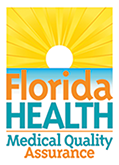What is an OASAS Impaired Driver Assessment?
An OASAS Impaired Driver Assessment is used to gather information about your history of alcohol and (or) drug use, previous treatment, risk for continued use, significant medical and mental health concerns, sources of natural supports and protective factors to assist in positive life changes, environmental factors, employment history, familial and social relationships, and legal history. The OASAS Impaired Driver Assessment is used to determine if treatment is recommended and what level of care is advised.
What is the process?
There are several required components of the Clinical Screening and Assessment:
- Signed NYS OASAS IDS (OASAS Impaired Driver System) consent form
- A Urine Drug Screen (UDS)
- Completed questionnaires and measures
- Copies of the arrest report(s)
- Information obtained from at least two collateral persons
- A face to face meeting or via video teleconference
Assessments are performed by Shantia Geralds, LCSW, CASAC- Master, and will take approximately 1 hour and 30 minutes to complete. During the assessment, you will be asked for the names of at least two individuals (collaterals) that can be contacted to obtain further information regarding your arrest. Your collaterals will be outreached within two business days.
After the assessment is complete, you will need to go the laboratory for a urine drug screen. The results will be included in your report.

Paperwork & Fees
Assessment Fees
The fee for the full OASAS Impaired Driver Assessment plus the necessary paperwork is $350. All expedited appointments and filings will be subject to an additional $120 charge. Payment is due at the time of the assessment, and can be paid via Zelle and credit card.
Insurance is not accepted for this service, as many insurance companies do not see this as medically necessary. If requested, Shantia will be happy to provide you with a receipt so that you can submit it to your insurance provider for possible reimbursement.
Note: The Urine Drug Screen is not included in the fee. This will be an expense paid by you or through your insurance carrier directly to the laboratory.



